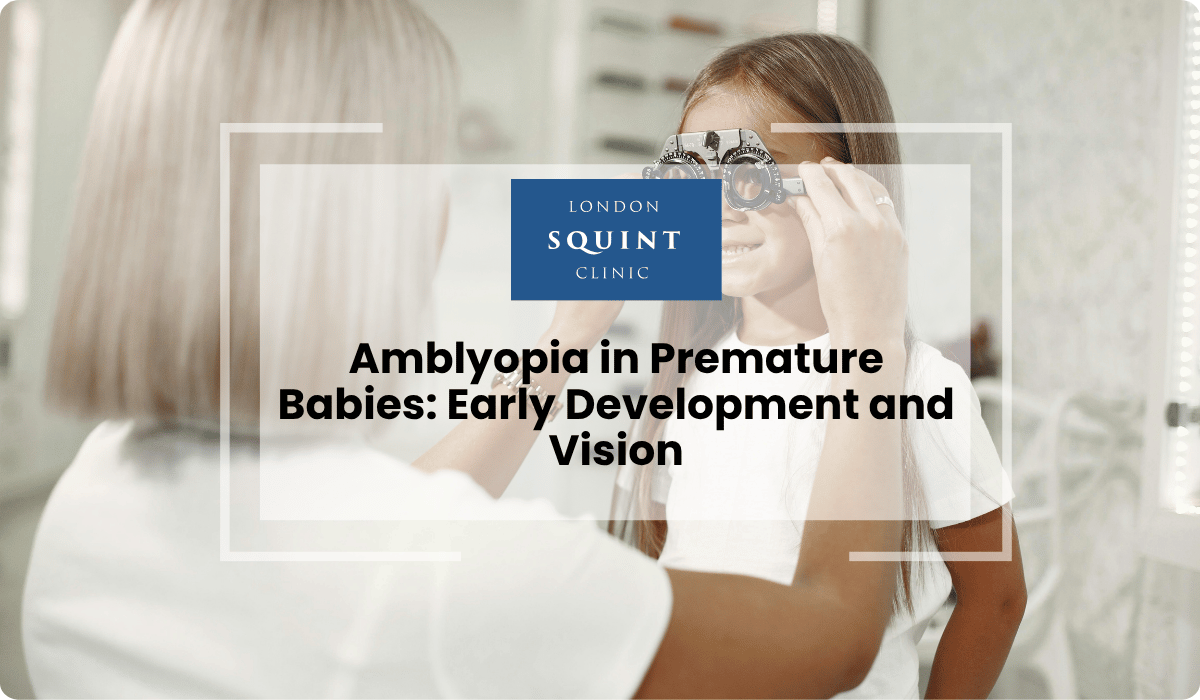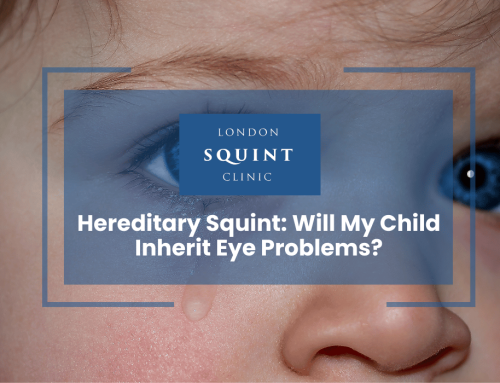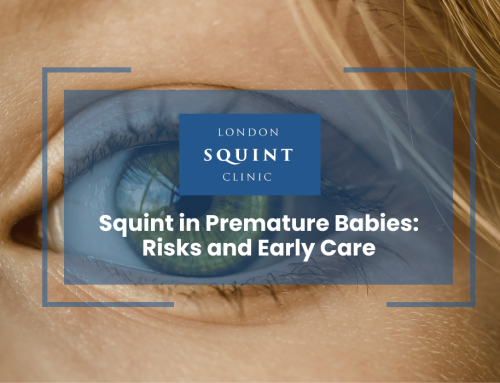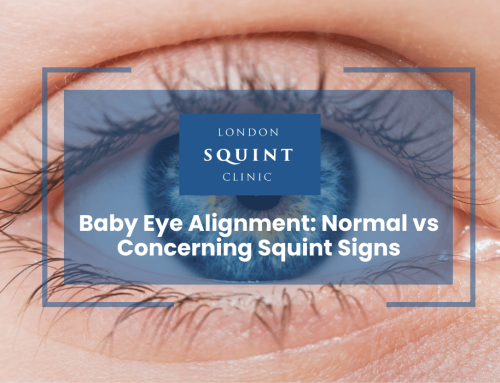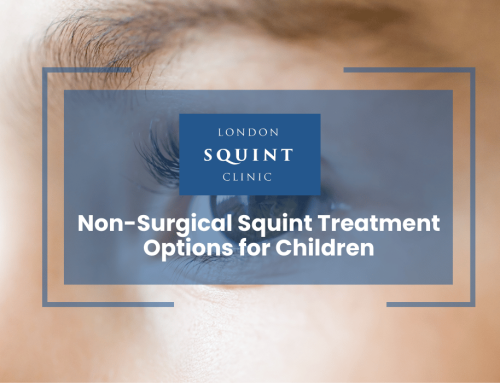Amblyopia in Premature Babies: Early Development and Vision
Essential Insights for Parents of Premature Infants
Premature infants face significantly higher risks of developing amblyopia and other vision problems due to interrupted visual development during the critical third trimester. The combination of early birth, NICU environment, and associated medical complications creates unique visual challenges requiring specialized attention.
Early and regular screening is crucial—infants born before 32 weeks or under 1,500 grams should receive their first eye examination between 4-6 weeks after birth, with ongoing assessments throughout childhood. Vision problems including ROP, refractive errors, and strabismus occur at rates 5-10 times higher in premature babies compared to full-term infants.
The good news is that with prompt intervention—including appropriate glasses, patching therapy, and specialized visual stimulation—many premature infants can achieve excellent visual outcomes. Parents play a vital role in this process through consistent implementation of treatment plans and ongoing advocacy for their child’s visual health needs.
Table of Contents
- Understanding Amblyopia Risk Factors in Premature Infants
- How Does Premature Birth Impact Visual Development?
- Common Vision Problems in NICU Graduates
- Screening Protocols for Preterm Babies’ Eye Health
- Why Are Premature Babies More Susceptible to Lazy Eye?
- Early Intervention Strategies for Preterm Vision Issues
- Long-term Visual Outcomes and Management Approaches
- Supporting Parents of Premature Infants with Vision Concerns
Understanding Amblyopia Risk Factors in Premature Infants
Premature babies face significantly higher risks of developing amblyopia (lazy eye) compared to full-term infants. This increased vulnerability stems from several interconnected factors related to their early arrival. The visual system undergoes critical development during the third trimester of pregnancy—precisely the period that premature infants miss in the protective uterine environment.
Key risk factors that predispose premature babies to amblyopia include low birth weight (particularly under 1,500 grams), gestational age less than 32 weeks, and extended oxygen therapy. Additionally, premature infants have higher incidences of refractive errors such as astigmatism, myopia, and hyperopia—all of which can contribute to amblyopia development if left uncorrected during the critical period of visual development.
Retinopathy of prematurity (ROP), a condition affecting blood vessel growth in the retina, represents another significant risk factor exclusive to premature infants. Even mild cases of ROP that resolve spontaneously can alter normal visual development pathways, potentially leading to amblyopia. Furthermore, premature babies often experience prolonged hospitalisation with limited visual stimulation, which may impact the normal binocular development necessary for healthy vision.
How Does Premature Birth Impact Visual Development?
Visual development follows a precise timeline that begins in utero and continues through early childhood. When a baby is born prematurely, this carefully orchestrated developmental sequence is disrupted. During the final trimester, critical neural connections form between the eyes and brain, establishing the foundation for visual processing. Premature birth interrupts this process, forcing visual development to occur in an environment fundamentally different from the womb.
The visual cortex and pathways undergo significant maturation between 24-40 weeks of gestation. In premature infants, this development must proceed in an environment with different light exposure, visual stimuli, and physiological conditions than nature intended. The bright, often chaotic NICU environment contrasts sharply with the dim, muffled conditions of the womb where visual development typically begins.
Additionally, premature birth often coincides with other medical complications that may directly or indirectly affect visual development. Intraventricular haemorrhage, periventricular leukomalacia, and hypoxic events can damage visual pathways in the developing brain. The combination of these neurological challenges with the premature exposure to visual stimuli creates a perfect storm that can alter the trajectory of visual development, potentially leading to amblyopia and other visual processing disorders.
Common Vision Problems in NICU Graduates
Infants who graduate from neonatal intensive care units (NICUs) frequently encounter a spectrum of vision problems that require careful monitoring and intervention. Retinopathy of prematurity (ROP) stands as the most recognised condition, affecting approximately 50-70% of extremely premature infants (born before 28 weeks). While many mild cases resolve spontaneously, more severe ROP can lead to retinal detachment and permanent vision loss if not treated promptly.
Beyond ROP, NICU graduates commonly develop refractive errors at rates significantly higher than their full-term peers. Studies indicate that approximately 20-30% of premature infants develop significant myopia (nearsightedness) by age two, compared to just 2-3% of full-term infants. Astigmatism and hyperopia (farsightedness) also occur more frequently. These refractive errors, if substantial and left uncorrected, create the perfect conditions for amblyopia to develop.
Strabismus (eye misalignment) represents another common challenge, affecting up to 25% of premature infants compared to 2-4% of the general population. This misalignment prevents proper binocular vision development and frequently leads to amblyopia if not addressed early. Additionally, cortical visual impairment (CVI), resulting from damage to visual pathways in the brain, occurs more frequently in premature infants who experienced hypoxic events or intraventricular haemorrhage. These vision problems often coexist, creating complex visual challenges that require specialised paediatric ophthalmological care.
Screening Protocols for Preterm Babies’ Eye Health
Comprehensive screening protocols have been established to identify vision problems in premature infants as early as possible. The Royal College of Ophthalmologists and the British Association of Perinatal Medicine have developed evidence-based guidelines that determine which babies require screening and when these examinations should occur. Generally, infants born before 32 weeks gestational age or weighing less than 1,500 grams at birth qualify for retinopathy of prematurity (ROP) screening.
The initial eye examination typically occurs between 4-6 weeks after birth or at 30-31 weeks postmenstrual age, whichever is later. This timing is crucial as it allows for detection of ROP at a stage when intervention can prevent progression. The screening involves dilating the infant’s pupils and carefully examining the retina using an indirect ophthalmoscope or specialised retinal imaging systems. Follow-up examinations are scheduled based on findings, with intervals ranging from 3-7 days for concerning cases to 2-3 weeks for stable eyes.
Beyond the NICU period, premature infants should undergo comprehensive eye examinations at regular intervals throughout childhood. The recommended schedule includes assessments at 6 months, 12 months, and annually thereafter until age 5, with additional examinations if concerns arise. These evaluations assess visual acuity, ocular alignment, refractive errors, and binocular function—all critical components for early detection of amblyopia. Neonatal vision assessment techniques have evolved significantly, now incorporating technologies such as visual evoked potentials and preferential looking tests that can detect subtle visual deficits even in pre-verbal children.
Why Are Premature Babies More Susceptible to Lazy Eye?
The heightened susceptibility of premature infants to amblyopia stems from multiple interrelated factors. Primarily, the critical period for visual development—when the brain establishes and strengthens connections between the eyes and visual cortex—begins in utero and extends through early childhood. Premature birth disrupts this process at a fundamental level, creating vulnerability in the developing visual system.
Amblyopia develops when one eye sends a clearer image to the brain than the other, causing the brain to favour the stronger eye and suppress input from the weaker one. Premature infants face several conditions that create precisely this scenario. Refractive errors, particularly asymmetric ones (anisometropia), occur more frequently in premature babies and directly contribute to unequal visual input. Similarly, the higher incidence of strabismus in preterm infants prevents proper binocular fusion, another common pathway to amblyopia development.
The neurological basis for this increased susceptibility lies in the timing of critical periods for visual development. Research indicates that premature birth may actually accelerate certain aspects of visual cortex development while delaying others, creating asynchrony in the visual processing system. This disrupted timing affects binocular competition—the process by which visual inputs compete for cortical space—potentially making the visual system more vulnerable to developing preferences that lead to amblyopia. Additionally, the inflammatory processes and oxidative stress associated with premature birth may directly impact the developing visual pathways, further increasing susceptibility to amblyopia.
Early Intervention Strategies for Preterm Vision Issues
Early intervention represents the cornerstone of effective management for vision issues in premature infants. The remarkable plasticity of the infant visual system creates a window of opportunity during which appropriate interventions can significantly alter visual outcomes. For premature babies, this intervention begins in the NICU with optimised lighting conditions and visual stimulation protocols designed to support healthy visual development.
Once specific vision issues are identified, targeted interventions can be implemented. For refractive errors, prescription glasses may be introduced even in very young infants. These specially designed frames accommodate small facial features while correcting significant refractive errors that could otherwise lead to amblyopia. For strabismus, treatment options range from glasses that address accommodative components to surgical alignment in cases where non-surgical approaches prove insufficient.
Amblyopia treatment in premature infants follows similar principles to treatment in full-term children but often begins earlier and requires more frequent monitoring. Patching therapy—covering the stronger eye to force use of the weaker eye—remains a mainstay of treatment, though modified approaches may be necessary for very young infants. Atropine penalisation, which blurs vision in the stronger eye through eye drops, offers an alternative when compliance with patching proves challenging. Vision therapy exercises designed specifically for infants can supplement these treatments, stimulating development of binocular function and visual processing skills. The key to success lies in early detection through comprehensive screening, prompt intervention tailored to the specific visual condition, and consistent follow-up to monitor progress and adjust treatment as needed.
Long-term Visual Outcomes and Management Approaches
The long-term visual outcomes for premature infants with amblyopia and other vision disorders vary considerably based on multiple factors, including gestational age at birth, severity of initial conditions, timing of intervention, and treatment compliance. Research indicates that with appropriate early intervention, many premature infants can achieve visual outcomes comparable to their full-term peers, though subtle differences in visual processing may persist.
Long-term management typically follows a developmental approach, with treatment strategies evolving as the child grows. During infancy and toddlerhood, the focus remains on correcting refractive errors, addressing strabismus, and initiating amblyopia therapy. As children reach school age, management expands to include assessment of visual processing skills, reading efficiency, and visual-motor integration—areas where premature children may face additional challenges even with good visual acuity.
Studies tracking premature infants into adolescence and adulthood reveal that certain visual issues may emerge or re-emerge during periods of significant growth or academic demand. This highlights the importance of continued ophthalmological monitoring throughout childhood and adolescence, even for those who appear to have resolved their early visual challenges. The management approach should be comprehensive, often involving a multidisciplinary team including ophthalmologists, orthoptists, optometrists, and developmental specialists. This collaborative care model ensures that all aspects of visual function are addressed, from basic visual acuity to complex visual processing skills essential for academic success and quality of life.
Supporting Parents of Premature Infants with Vision Concerns
Parents of premature infants with vision concerns face unique challenges that extend beyond the medical management of their child’s condition. The emotional journey often begins in the NICU, where parents must process complex information about their baby’s visual development while managing the broader stresses of premature birth. Healthcare providers play a crucial role in supporting these families through clear communication, empathetic guidance, and practical resources.
Education represents a fundamental aspect of parental support. Parents benefit from understanding the specific nature of their child’s visual condition, the rationale behind treatment recommendations, and realistic expectations regarding outcomes. This knowledge empowers parents to become effective advocates for their child’s visual health and active participants in treatment. Practical training in administering eye drops, implementing patching therapy, or maintaining glasses on a small infant provides parents with the skills needed for successful home management.
Beyond clinical education, emotional support proves equally important. Parent support groups specifically for families of premature infants with vision concerns offer valuable peer connections and shared experiences. These communities provide both practical advice and emotional reassurance that can significantly reduce parental anxiety. Additionally, connecting parents with early intervention services, educational resources, and financial assistance programmes helps address the broader impacts of visual impairment on development and family functioning. By supporting parents holistically, healthcare providers enhance treatment compliance, improve outcomes, and help families navigate the complex journey of raising a premature child with vision challenges.
Frequently Asked Questions
At what age should premature babies have their first eye examination?
Premature babies should have their first eye examination between 4-6 weeks after birth or at 30-31 weeks postmenstrual age, whichever comes later. Infants born before 32 weeks gestation or weighing less than 1,500 grams qualify for retinopathy of prematurity (ROP) screening. Follow-up examinations are then scheduled based on initial findings, with continued assessments recommended at 6 months, 12 months, and annually until age 5.
How common is amblyopia in premature babies compared to full-term infants?
Amblyopia occurs significantly more frequently in premature babies than in full-term infants. Studies indicate that premature infants have a 3-4 times higher risk of developing amblyopia, with rates ranging from 10-15% in premature populations compared to 2-4% in full-term infants. This increased prevalence is due to higher rates of risk factors including refractive errors, strabismus, and retinopathy of prematurity.
Can amblyopia in premature babies be completely cured with early treatment?
With early detection and appropriate intervention, amblyopia in premature babies can often be successfully treated, though “cure” may not be the most accurate term. Most premature infants with amblyopia who receive timely treatment before age 7 can achieve significant visual improvement, with many reaching normal or near-normal visual acuity. However, some subtle visual processing differences may persist even with excellent acuity outcomes, particularly in cases associated with severe prematurity or neurological complications.
What are the signs that a premature baby might be developing vision problems?
Signs that a premature baby might be developing vision problems include: poor visual tracking or following of objects/faces, persistent eye misalignment after 4 months of age, abnormal eye movements, excessive sensitivity to light, lack of eye contact, delayed visual milestones, unusual head positioning when looking at objects, and squinting or closing one eye. Parents should also watch for white pupils in photographs (leukocoria) which can indicate serious eye conditions requiring immediate attention.
How does patching therapy work for premature infants with amblyopia?
Patching therapy for premature infants works by covering the stronger eye with an adhesive patch, forcing the brain to process visual information from the weaker eye. This strengthens neural connections between the weaker eye and visual cortex. For premature infants, patching is typically introduced gradually, starting with shorter periods (1-2 hours daily) and potentially increasing based on severity and response. The therapy is carefully monitored with frequent follow-ups, usually every 6-8 weeks, to prevent occlusion amblyopia in the patched eye and to adjust treatment as the visual system develops.
Are there special considerations for glasses prescribed to premature babies?
Glasses for premature babies require special considerations including: lightweight, flexible frames designed specifically for infant faces; wrap-around styles with soft, adjustable straps to keep glasses in place; impact-resistant polycarbonate lenses; proper bridge fit to prevent sliding; and appropriate lens power that may differ from prescriptions for older children. Premature infants often need stronger prescriptions initially, which may be reduced as the visual system matures. Specialized pediatric opticians experienced with fitting premature infants can ensure proper fit and comfort.
How long does the critical period for visual development last in premature babies?
The critical period for visual development in premature babies extends from birth through approximately 8-10 years of age, with the most sensitive period occurring during the first 3-4 years. Unlike full-term infants, premature babies’ critical periods are calculated based on corrected age (time since due date) rather than chronological age. Research suggests that certain aspects of visual development may follow an accelerated timeline in premature infants, while others may be delayed, creating a more complex developmental window that requires careful monitoring and timely intervention.
Find out if you are suitable for Double Vision Treatment
Not everyone is eligible for double vision surgery.
Find out if you could benefit from this life-changing surgery by taking the quick self-suitability quiz below:
Our most popular procedures

Hello, I’m Nadeem Ali
I’m one of the few eye surgeons in the world with 100% focus on Squint and Double Vision Surgery.
I have 24 years of eye surgery experience, and worked for 13 years as a Consultant at London’s renowned Moorfields Eye Hospital.
In 2023, I left the NHS to focus fully on treating patients from across the world at the London Squint Clinic. You can read more about me here.
There’s lots of information on the website about: squint surgery, double vision surgery and our pricing.
The most rewarding part of my job is hearing patients tell me how squint or double vision surgery has changed their lives. You can hear these stories here.
Mr Nadeem Ali
MA MB BChir MRCOphth FRCSEd(Ophth)
